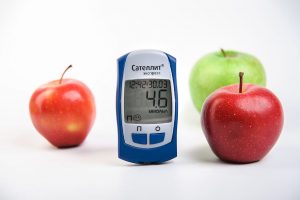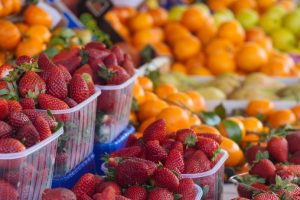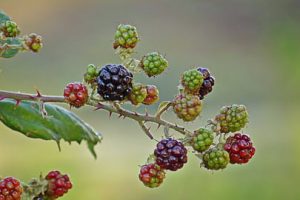Fruit and Human Anatomy

Our bodies are designed to eat and digest fruit. Nothing is easier to prepare and digest. Biologically speaking, humans are frugivores by nature. We thrive on fruit based diets because that is what our bodies are designed to consume and process most efficiently.
Basic human anatomy and physiology confirm our natural inclination to consume fruit. The following facts show why we should include a large amount of sweet, ripe, fresh juicy fruits in our diet. Let us explore these facts:
Fact #1 – Fruit is attractive to our sight. Color vision allows us to scan and find ripe fruit on trees, bushes, and vines.
Fact #2 – Fruit is attractive to our taste. When comparing all food sources available to us on their raw, independent, natural state, fruits are by far the tastiest. This clear sign points at our natural inclination towards fruit.
Fact #3 – Fruit is attractive to our smell. By smelling, we can differentiate ripe fruit from rotten fruit, and from other foods we shouldn’t eat. Imagine the difference in smell between a perfectly ripened pineapple, and that of dead animal flesh.
Fact #4 – Fruit is attractive to our touch. This sense also allows us to differentiate between ripe, unripe, and rotten fruit.
Fact #5 – Fruit is easy to harvest. Our hands can pick any type of fruit. We can carry, rip, peal, chew, swallow, and assimilate most fruit with little effort. Harvesting and processing fruit is much easier than catching and processing a fish or a rabbit, even if you have the latest tools and equipment.
Fact #6 – Humans’ teeth are designed to clave and mash soft ripe fruit. They don’t do so well tearing up the skin of a zebra.
Fact #7 – Our small and large intestines are long and well suited for digesting juicy fruits. They don’t do well with dry or bulky substances such as grains or animal flesh. Fatty and high-protein meals, which lack fiber, take a long time to move through our small intestine. These lead to fermentation, putrefaction, constipation, and toxemia, which are tied to illness and disease, such as intestinal prolapse, irritable bowel syndrome, hemorrhoids, and cancer, just to name a few. These same illnesses are rare for those who follow a fruit-based diet.
Fact #8 – Blood sugar levels are more stable after eating meals of juicy fruits, than after eating complex carbohydrate foods such as grain, bread, pasta, or potatoes.
Fact #9 – Ripe fruits offer simple carbohydrates that require little to no digestion. These are easily absorbed and quickly delivered to our cells. Foods like grains and potatoes require cooking. They take much longer to digest, and are rarely digested completely, leading to fermentation, and some of the previously mentioned complications.
Fact #10 – Glucose, a type of sugar found in fruit, is the primary source of energy for every cell in our body. Our brain is full of nerve cells, making it the most energy-demanding organ in our body. (1) When our body doesn’t get glucose from our diet, it is forced to use proteins and fats, and converts them into glucose. This is a slow and energy depleting process, it produces acidic waste as a byproduct, damaging tissue around our bodies. It is also one of the main reasons why more than 54% of the U.S. population relies on coffee and energy drinks to get them through each day. (2) Acidic waste is a likely reason to why tissue and organ failure is so common in our society.
To learn more about fruit and our human anatomy, I recommend you look at an excellent chart comparing the anatomical differences between omnivores, carnivores, herbivores, frugivores and humans. You can find this by typing “frugivore chart” on Google. This chart shows the obvious similarities between humans’ anatomy and physiology, compared to other frugivore species such as the primates. On the same chart, we can see the contrast between our bodies and those of true omnivores, carnivores, and herbivores. Remember what Delphi said: “Know Thyself”.
Previews Section:
Thriving on Fruit Based Diets
Next Section:
Does Fruit Consumption Lead to Illness and Disease?
Thank you for reading!
Please donate to help us publish this book.
PayPal: trevesbruno@gmail.com
Venmo: @Bruno-Treves
Sources:
(2) https://www.hsph.harvard.edu/news/multimedia-article/facts/



